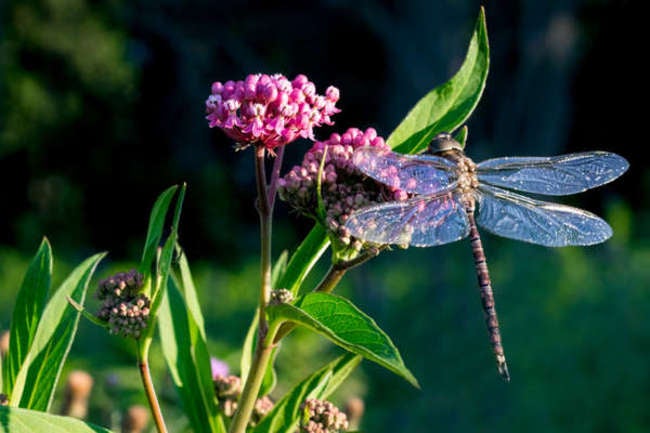

We may earn revenue from the products available on this page and participate in affiliate programs. Learn More ›
Home Advice You Can Trust
Tips, tricks & ideas for a better home and yard, delivered to your inbox daily.
Say Hello to the “Mosquito Hawk”
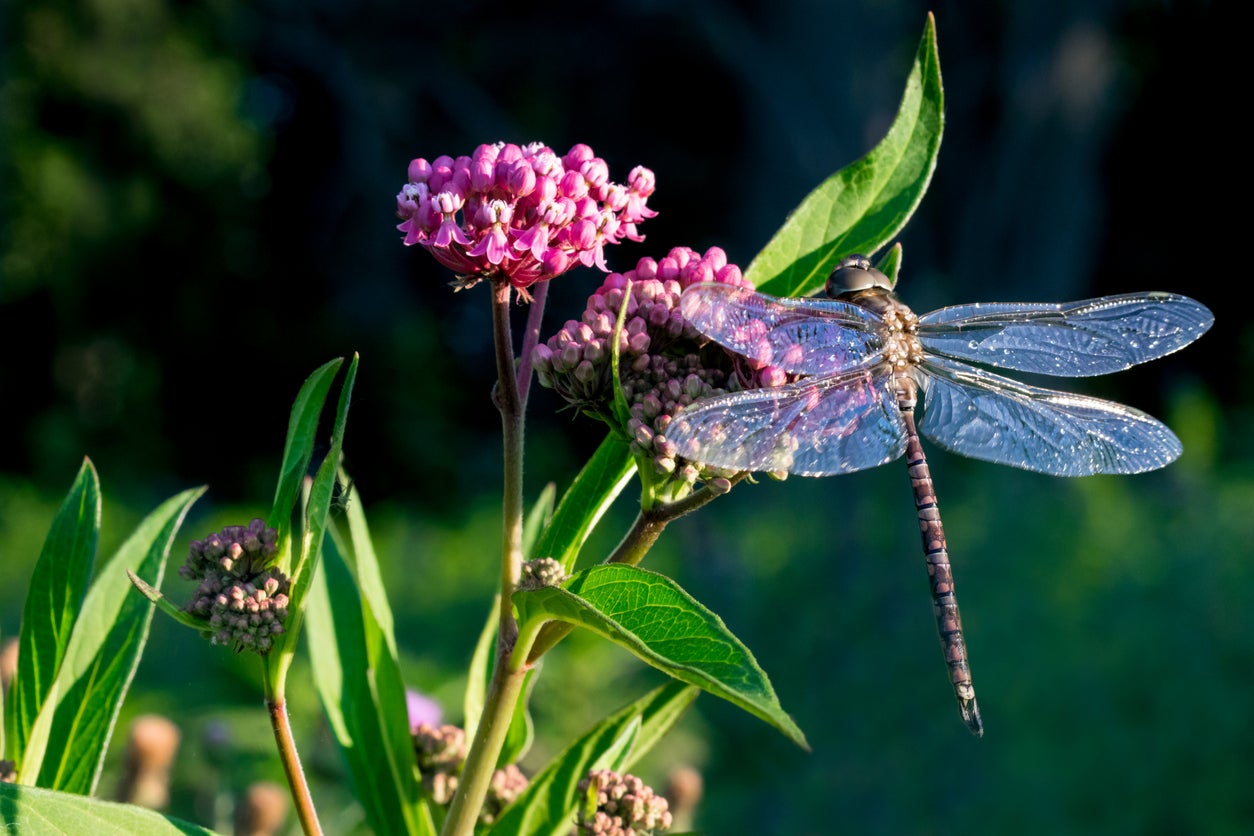
With their elegant, colorful wings and speedy aerial acrobatics, dragonflies (Anisoptera) have a certain fairytale quality—but here’s an undisputed fact: These insects will eat up to 100 mosquitos a day. Welcoming dragonflies into your garden can help reduce a pesky skeeter population. Unlike butterflies and bees that dine on nectar and pollen, however, dragonflies are carnivorous creatures. Attracting them is a bit trickier than simply planting sweet-smelling flowers.
The secret to inviting dragonflies is to make outdoor areas more hospitable to the way they breed, hunt, and just hang out—and only certain flora will do. Get clicking to learn how to create a dragonfly paradise that will control mosquitoes as well as mayflies, midges, ants, and other pests on your property. Talk about happily ever after!
Fanwort
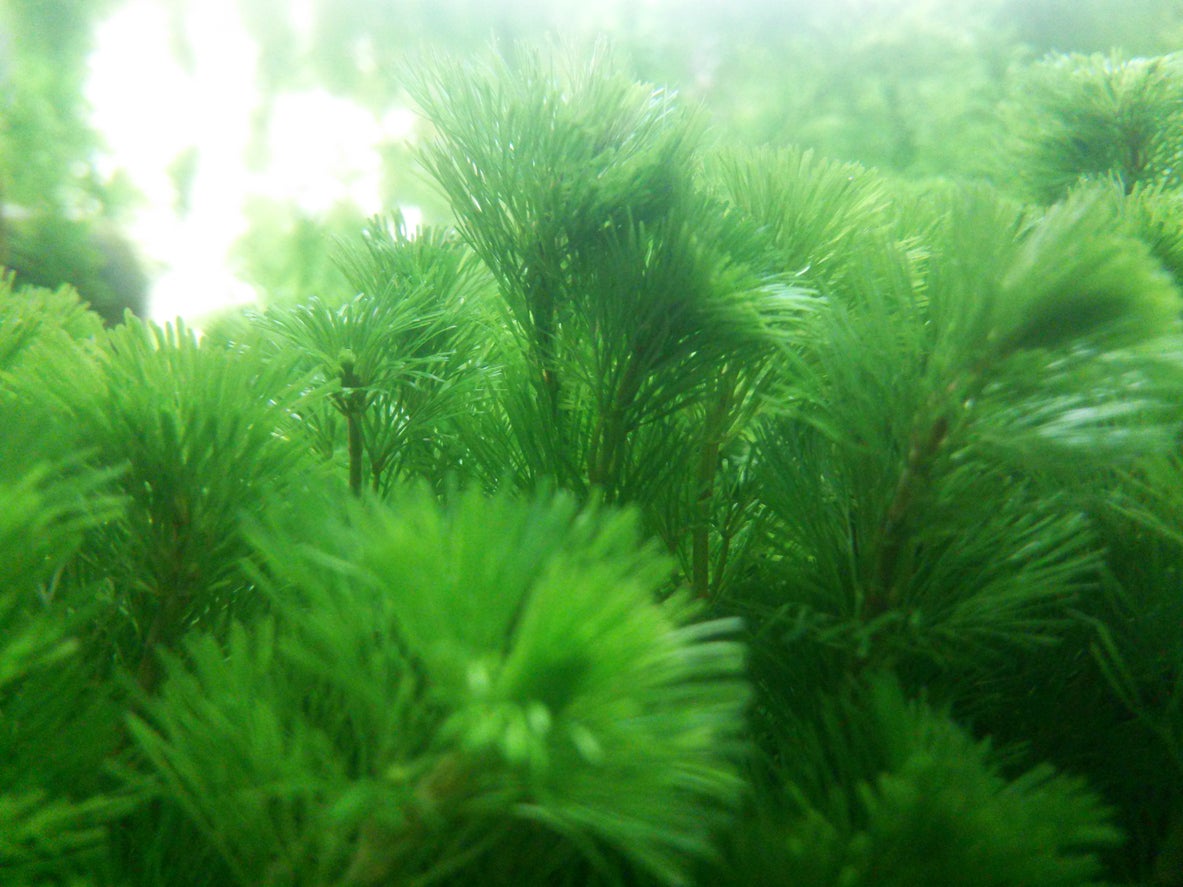
Dragonflies lay their eggs in or near water and need H2O during their nymph stage to reach maturity. So if you’ve got moist soil or a backyard pond, savvy planting can help nurture an army of insects nicknamed the “mosquito hawk.”
Female dragonflies deposit eggs on the stems and undersides of fanwort (Cabomba caroliniana), a perennial aquatic plant that grows fully submerged except for delicate, fanlike white, yellow, or purple flowers, which float on the surface. It’s a hardy, fast-growing plant that likes warm temperatures and at least partial sunlight.
Swamp Milkweed
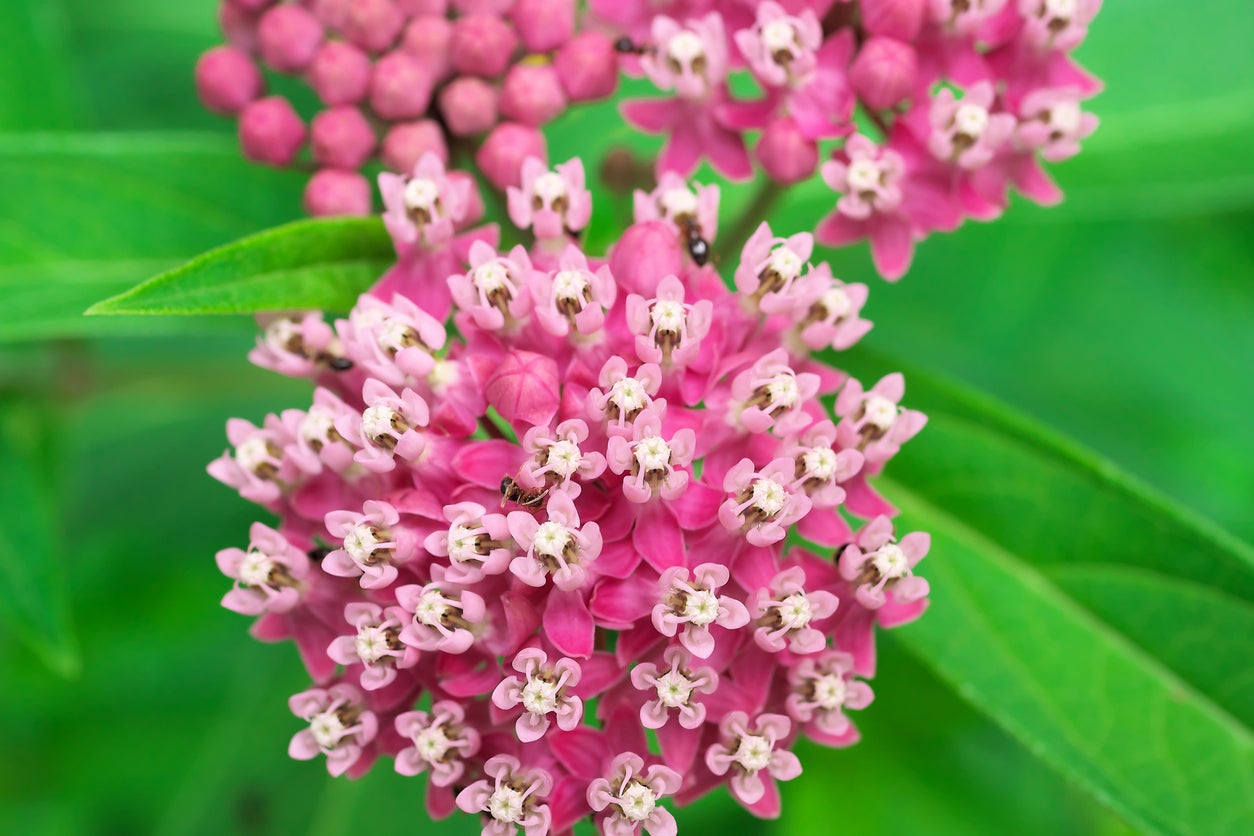
Swamp milkweed (Asclepias incarnata) thrives in moist soil and ample sun. Plant it in spring or fall, 30 to 36 inches apart, since it forms clumps and will eventually fill out and in nicely. An herbaceous perennial, this milkweed (also a friend to the Monarch butterfly) has white and pink flowers that will pretty up a dragonfly breeding ground, and long stalks that these insects like to rest upon.
Arrowhead
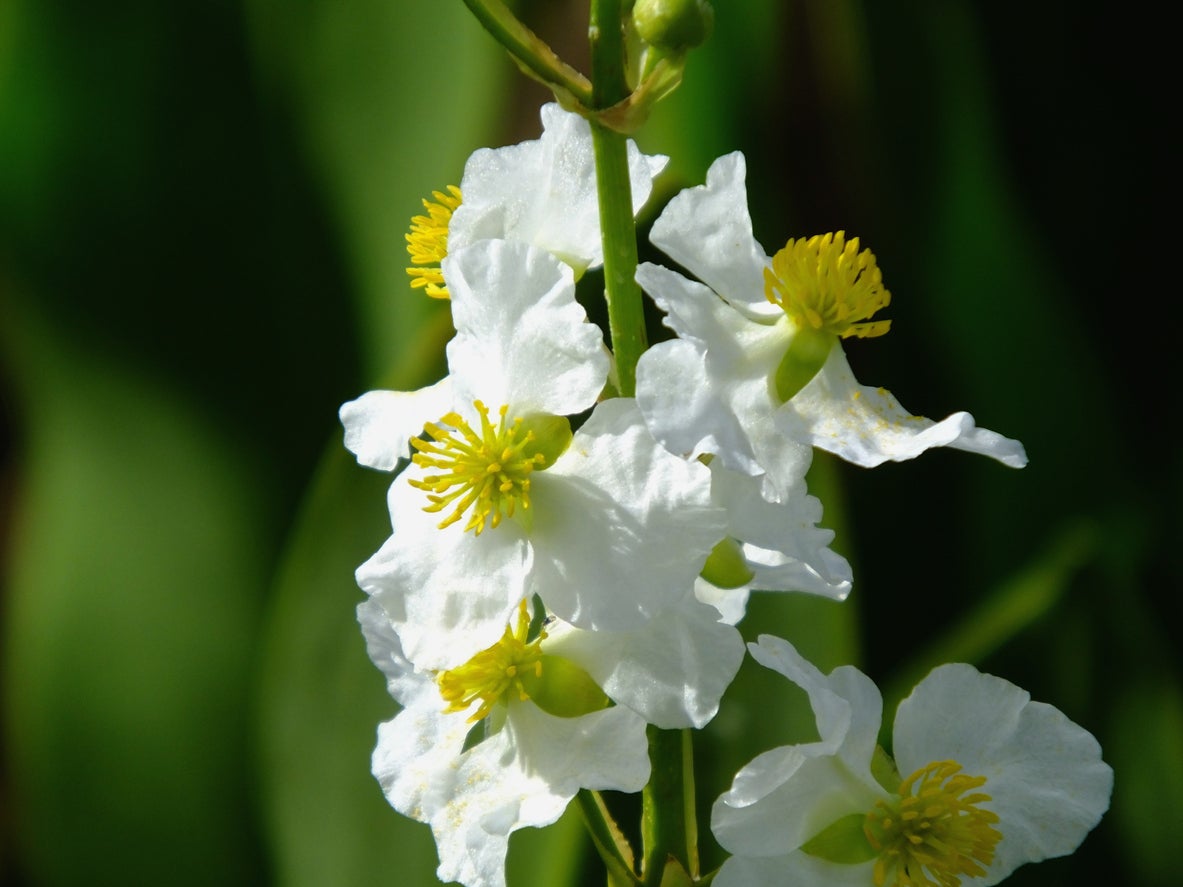
Also known as duck-potato, arrowhead (Sagittaria latifolia) is an easy-care aquatic perennial that grows above the water level and offers an ideal nursery for dragonflies. This rugged plant can thrive in many locales, even those with harsh winters, and is tolerant of a range of light conditions, from full to partial sun. It boasts heart-shaped leaves and white flowers that bloom all summer. For best results, purchase a live plant and place it in shallow water or wetland soil.
Water Lily
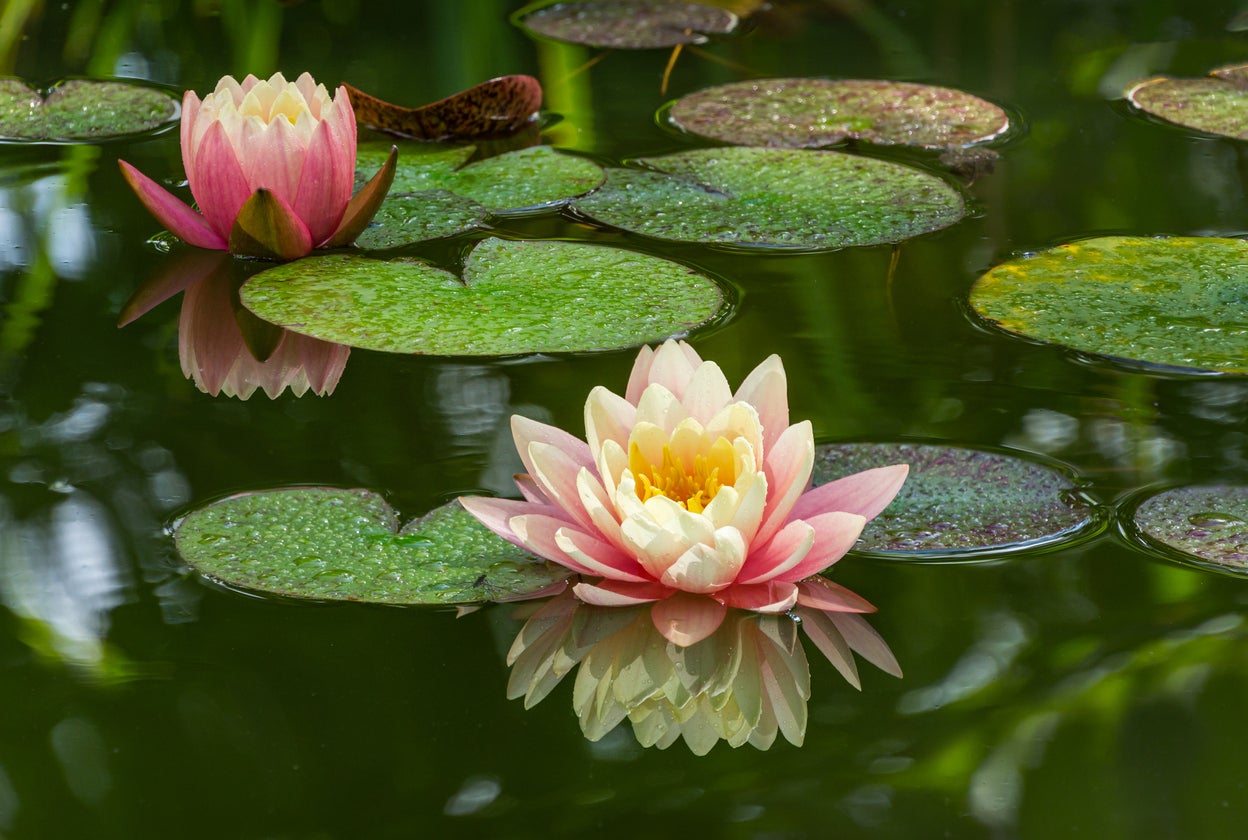
Just ask Monet! Few flowers are as magical as these quintessential aquatic plants that proffer a perfect place for dragonflies to lay eggs and shelter maturing nymphs. Water lilies (Nymphaeaceae) can grow in a pond, pool, or even a large tub, and with so many species, you’re likely to find one that will flourish in your climate, bringing large, vibrant blooms to your outdoor space. For containers, plant tubers in soil, add gravel, and then submerge the shallow container in a larger one filled with water.
Wild Celery
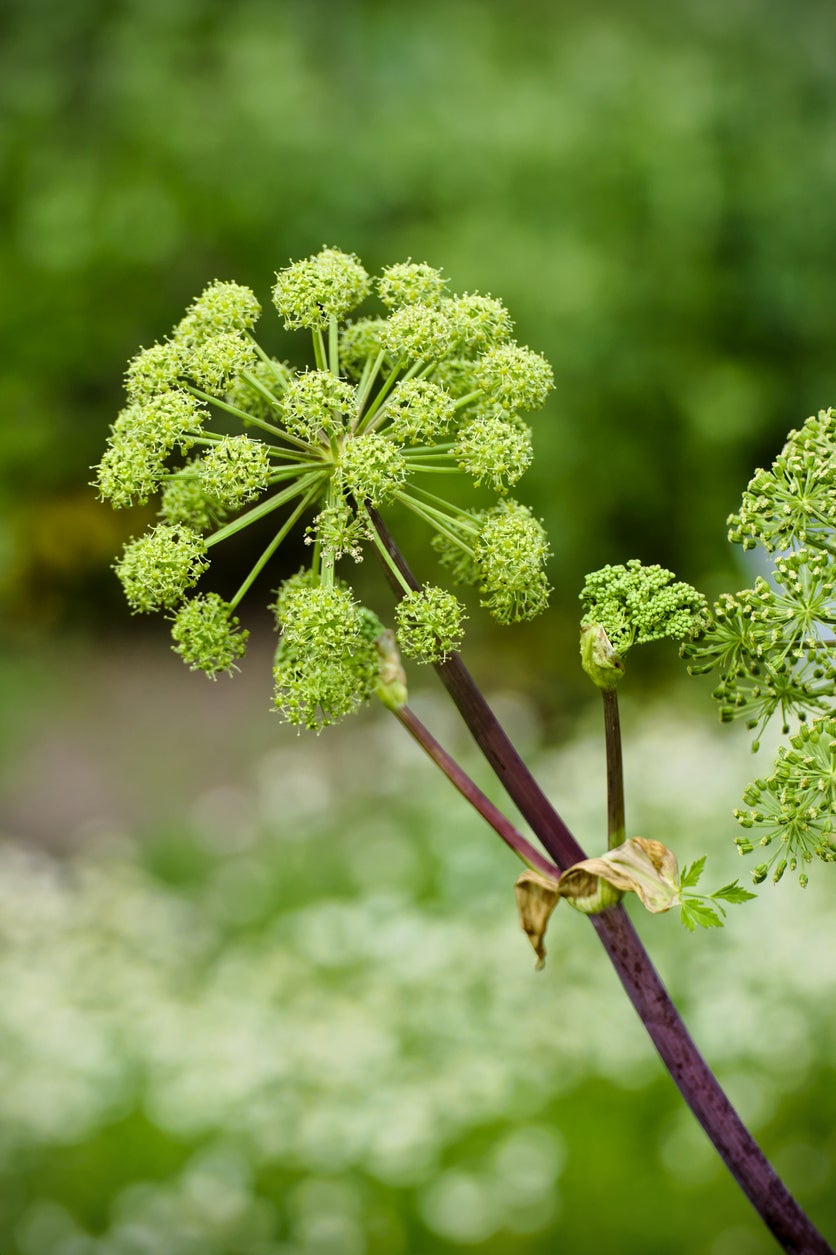
The evergreen perennial wild celery (Vallisneria americana), also known as eelgrass, establishes an excellent surface for dragonfly eggs. The long, slender, wavy leaves also give young’uns a safe and comfy place to hide. Small white or green flowers pop out in summer to add appeal to the garden.
Wild celery likes full sun to partial shade and can grow well in a large swath of the country (USDA hardiness zones 4 through 10). Simply anchor established plants to the bottom of a pond on gravel or sand, taking care not to cover the crown.
Water Horsetail
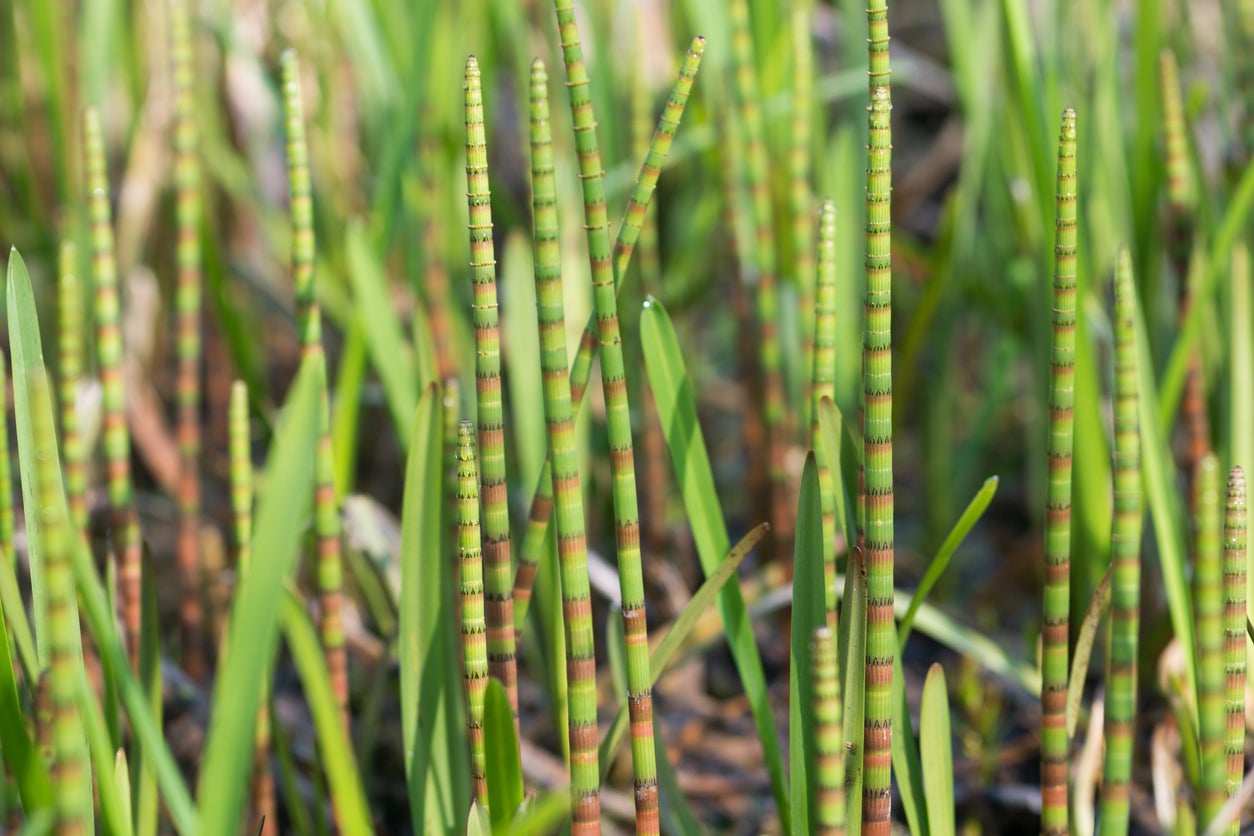
Encourage female dragonflies to lay and nymphs to emerge with water horsetail (Equisetum fluviatile), which features bamboo-like stems (but no flowers) that can rise up to 3 feet. It’s virtually pest- and disease-free, and is especially attractive as a backdrop along the rim of a pond or water garden. Plant it in standing water and give it full to partial sun in USDA hardiness zones 4 through 11.
Cattail
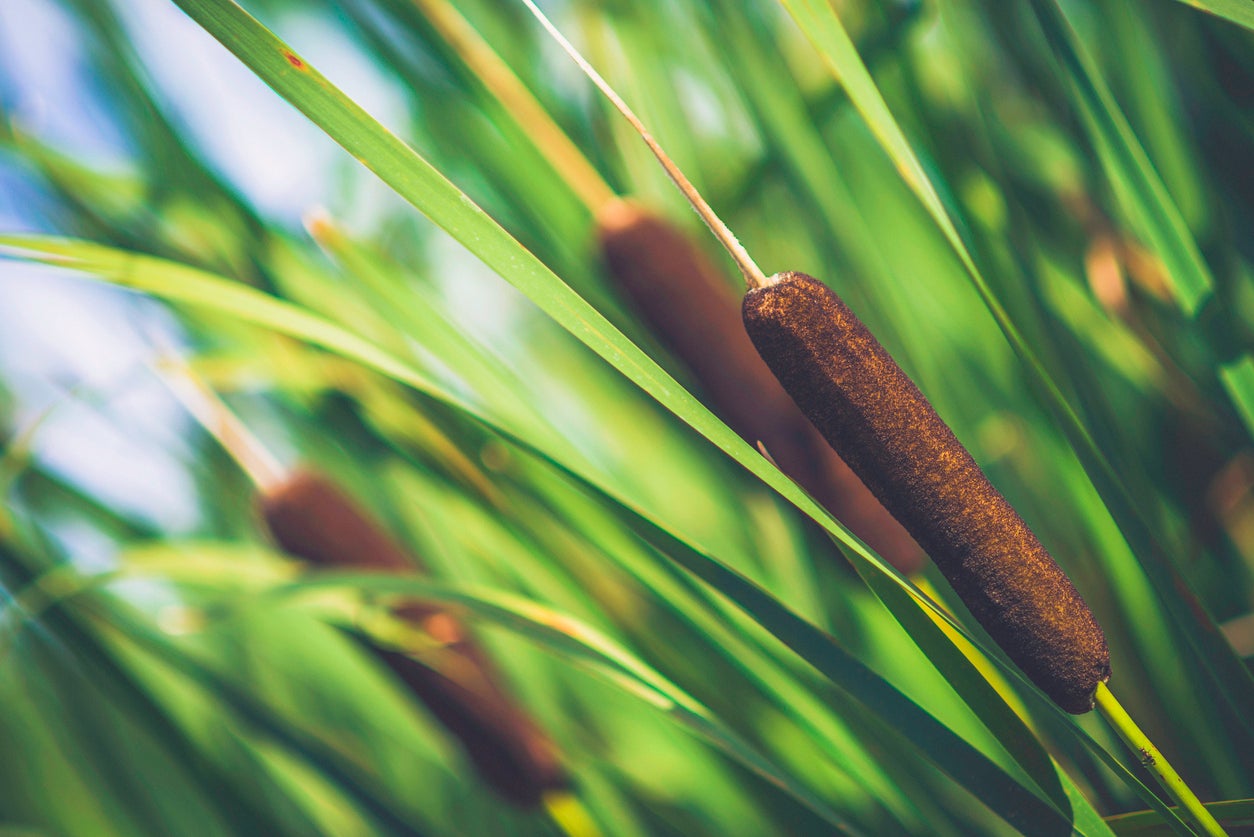
The infant Moses, tucked in his basket, wasn’t the only one to find protection by bulrushes—better known as cattails (Typha latifolia). Dragonflies often lay eggs in these swamp plants, and when the young hatch, they’re inclined to climb the reedy stem to rest.
Cattail, which can grow as high as 10 feet, is topped with thick, cylindrical, petal-less brown flowers. Start them out in clay pots with loamy soil. Though found in USDA hardiness zones 3 through 10, cattail truly thrives in warm, humid areas with full to partial sun year round.
Dwarf Sagittaria
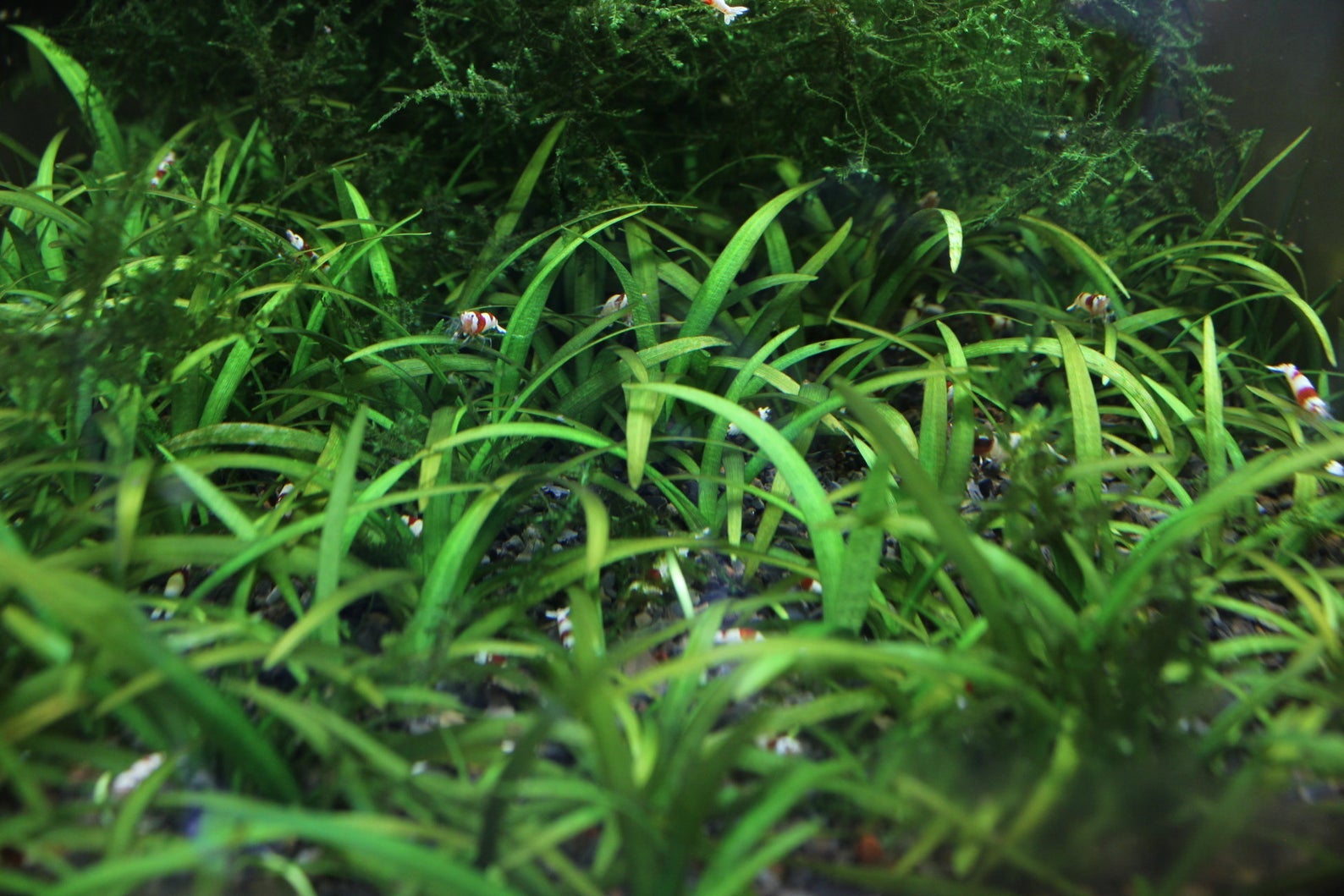
Though popular for aquariums, submerged vegetation such as Dwarf Sagittaria (Sagittaria subulata pusilla) is also the perfect pond plant for dragonflies. The freshwater plant also known as awl-leaf arrowhead, narrow-leaved arrowhead, Hudson Sagittaria, and Ribbon Wapato is bright green and grass-like, and grows quickly up to 6 inches tall.
Black-Eyed Susan
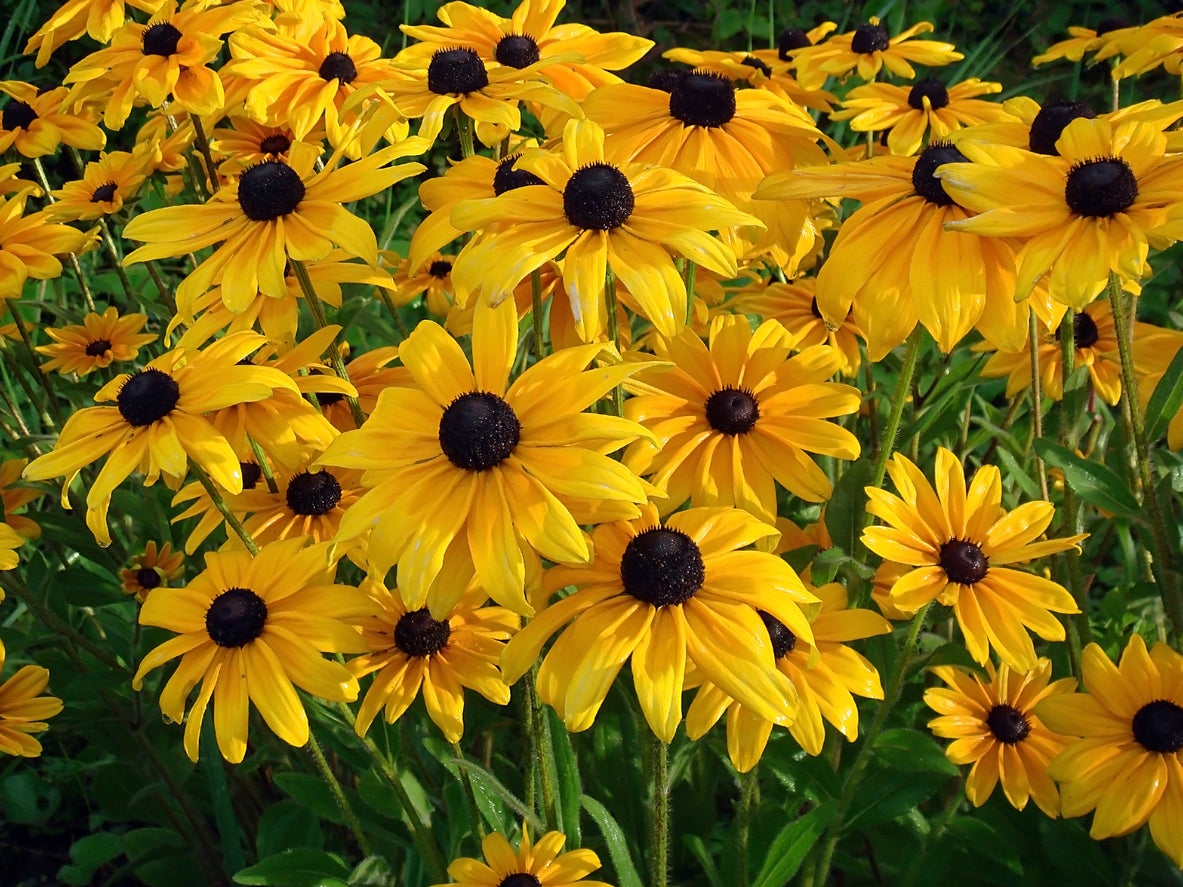
No pond? No problem! Dragonflies also seem to show a preference for certain plants that flourish in drier soil, and these include the pretty and popular black-eyed Susan (Rudbeckia hirta). Though these biennial plants love direct sun, they can tolerate winter temperatures as low as -30 degrees. Sow when soil temps are around 70 degrees for best seed germination and cover loosely. After flowers bloom in summer, cut them back for a bonus bloom in the fall.
Joe-Pye Weed
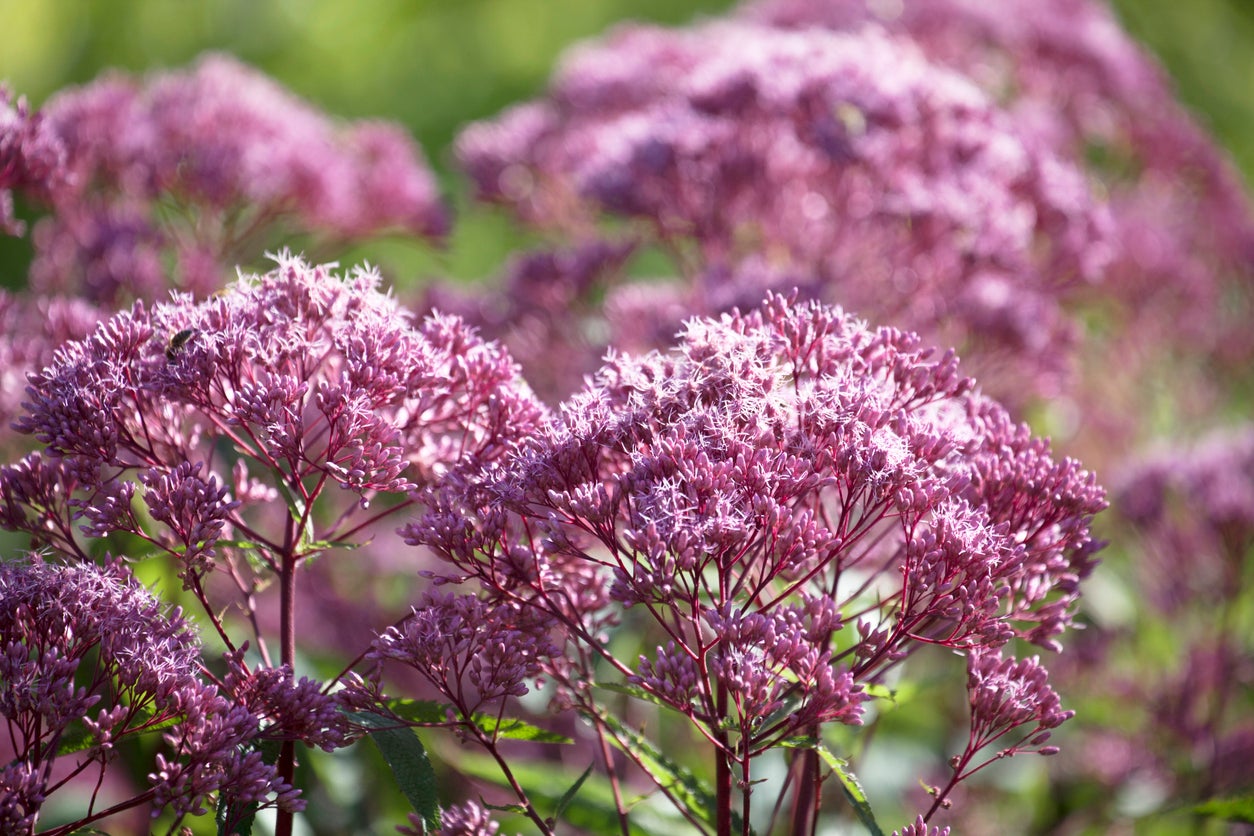
Call it gravel root, trumpet weed, kidney root, or the ever popular Joe-Pye—Eupatorium purpureum is an attractive garden addition to which dragonflies flock. Its lovely purple-pink blooms appear in midsummer through fall and impart a soft, vanilla-like scent. The herbaceous perennial likes full to partial sun and moist, well-drained soil. While it’s easy to grow, take note: Joe-Pye weed can reach 12 feet high, and since it reseeds itself, it can become invasive.
Meadow Sage
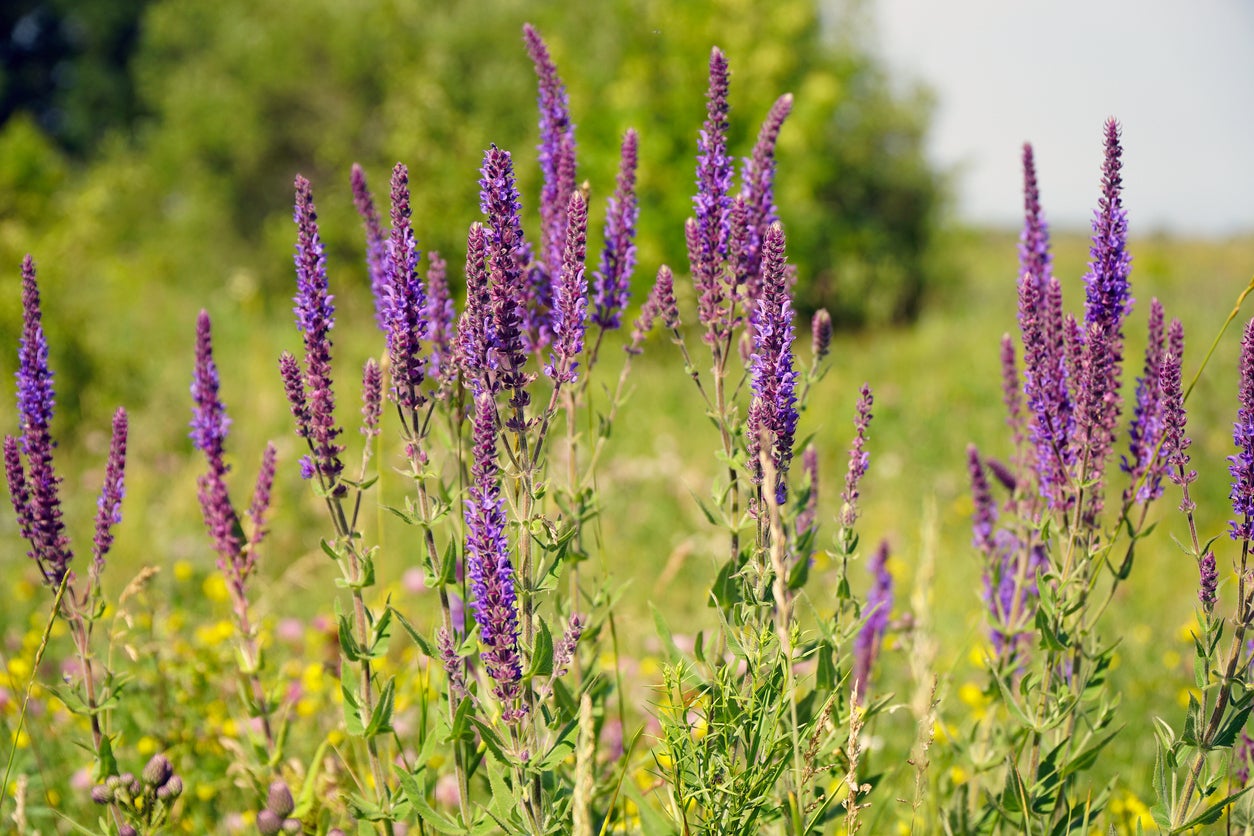
Dry conditions needn’t mean a dearth of dragonflies. The colorful creatures seem to enjoy handsome, hardy meadow sage (Salvia pratensis), which can endure drought and still produce spiky purple flowers that attract hummingbirds, butterflies, and other pollinators as well. Fortunately, deer don’t care for them, so the pretty perennials that do best in full sun and in USDA hardiness zones 4 through 8 won’t get munched on.
Yarrow
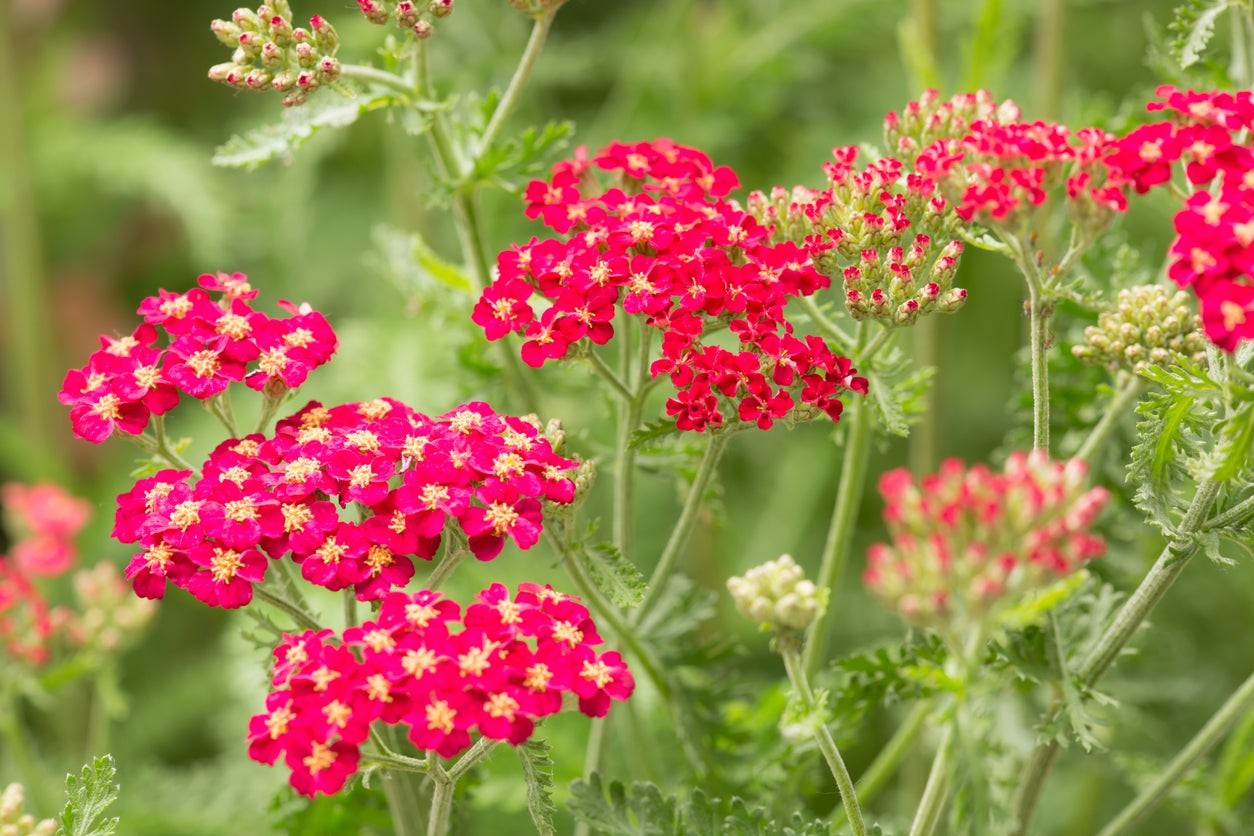
If you’re looking for a low-maintenance plant that draws dragonflies, look no further than this flowering perennial. Yarrow (Achillea millefolium) can be grown from seed or live plants as long as you give it plenty of sun and warmth. Rugged and disease-resistant, it will reward you with beautiful blooms in a variety of colors; plus, yarrow is known for its medicinal properties. It can become invasive, however, so rein it in if it tries to bully your garden.
Borage
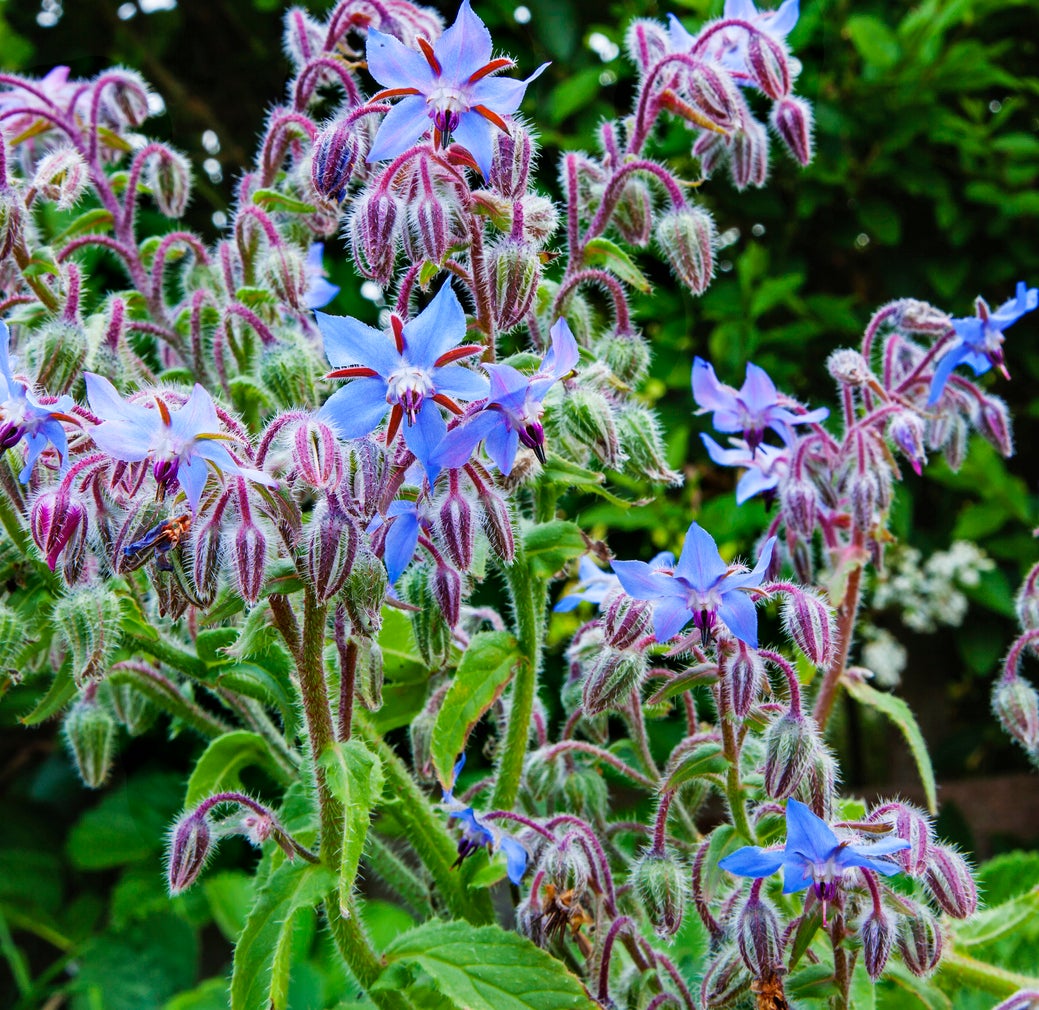
Delightful and drought-tolerant borage (Borago officinalis) can beckon its share of dragonflies to your landscape in a wide swath of USDA hardiness zones 2 through 11. Borage is a fast-growing and easy-care herb, boasting blue star-shaped flowers.
Most often tended as a companion in vegetable gardens (there’s some evidence that it may deter tomato hornworms), borage should be planted in early spring to bloom by June, enjoying full sun to partial shade. It’s also an edible herb with the delicate taste and essence of cucumbers—try some in your summer salads!
Sweet Coneflower
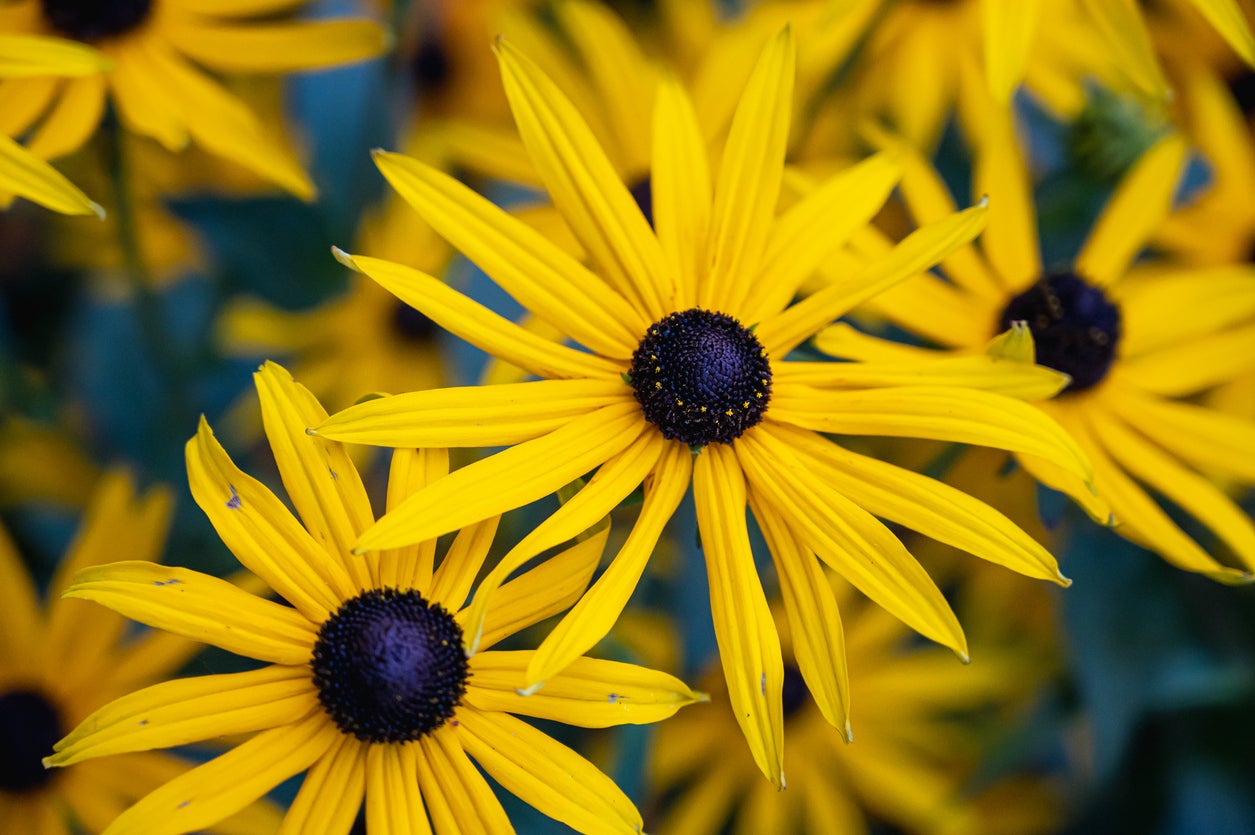
Welcome dragonflies while enjoying the luscious vanilla scent of sweet coneflower (Rudbeckia subtomentosa), an herbaceous perennial in the daisy family. Featuring long yellow petals and a brown-purple cone on stalks that grow up to 3 feet high, sweet coneflower makes an attractive and hardy garden addition.
This plant tolerates hot and humid summers and clay and sandy soil, plus deer won’t even give it a nibble. Plant these perennials from seed in USDA hardiness zones 4 through 8 where they’ll get full sun to partial shade.
Giant Coneflower
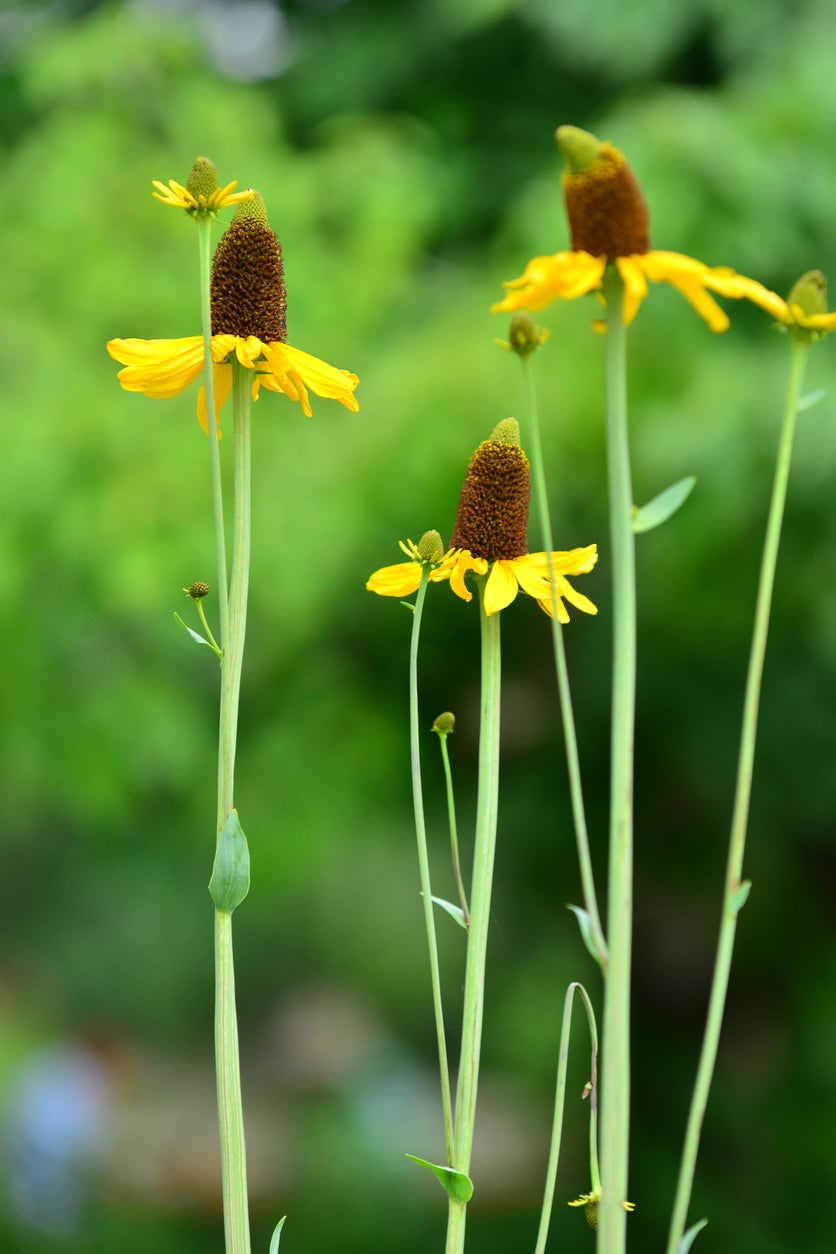
Imagine a Black-eyed Susan on steroids to get a sense of what these big beauties can bring to your garden. The giant coneflower (Rudbeckia maxima), an herbaceous perennial, has showy flowers that can grow as large as 6 inches around, with as many as 20 golden yellow petals. It can tolerate a variety of soil types—just give it a fairly sunny location and avoid overwatering to enjoy this plant and the bevy of dragonflies likely to cavort around it.

All You Need to Care for Your Lawn & Garden
Keeping your grass green and your plants thriving doesn’t just take a green thumb—it starts with the right tools and supplies.